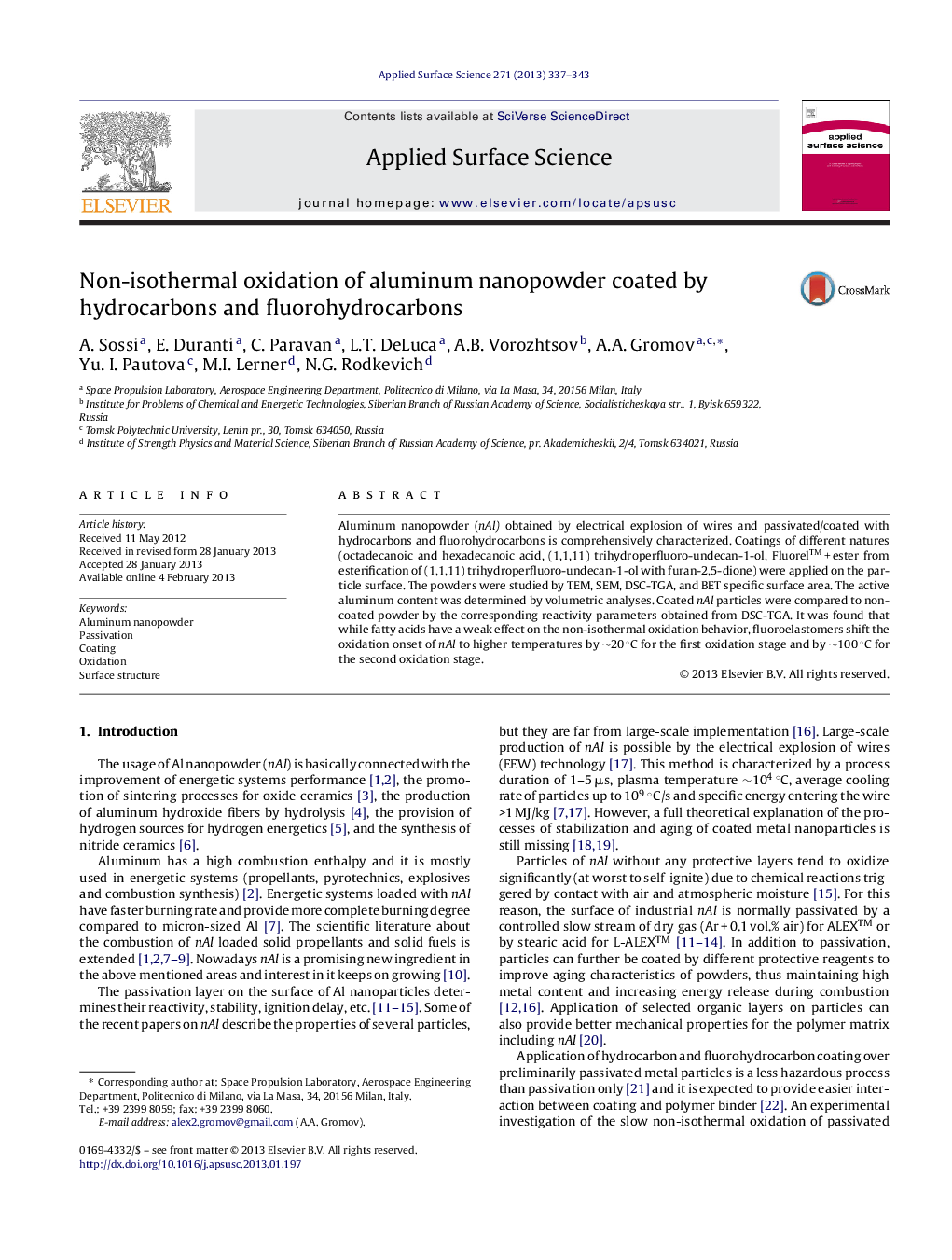| Article ID | Journal | Published Year | Pages | File Type |
|---|---|---|---|---|
| 5363128 | Applied Surface Science | 2013 | 7 Pages |
Aluminum nanopowder (nAl) obtained by electrical explosion of wires and passivated/coated with hydrocarbons and fluorohydrocarbons is comprehensively characterized. Coatings of different natures (octadecanoic and hexadecanoic acid, (1,1,11) trihydroperfluoro-undecan-1-ol, Fluorelâ¢Â + ester from esterification of (1,1,11) trihydroperfluoro-undecan-1-ol with furan-2,5-dione) were applied on the particle surface. The powders were studied by TEM, SEM, DSC-TGA, and BET specific surface area. The active aluminum content was determined by volumetric analyses. Coated nAl particles were compared to non-coated powder by the corresponding reactivity parameters obtained from DSC-TGA. It was found that while fatty acids have a weak effect on the non-isothermal oxidation behavior, fluoroelastomers shift the oxidation onset of nAl to higher temperatures by â¼20 °C for the first oxidation stage and by â¼100 °C for the second oxidation stage.
⺠Hydrocarbons and fluorohydrocarbons have been applied on the surface of aluminum nanopowder and comprehensively tested. ⺠Non-isothermal oxidation of coated aluminum nanopowder was studied by DSC-TGA. ⺠Fatty acids coating have a weak effect on the thermal behavior of aluminum nanopowder. ⺠The oxidation onset for fluoroelastomer-coated aluminum nanopowder shifts to higher temperatures by â¼20 °C.
